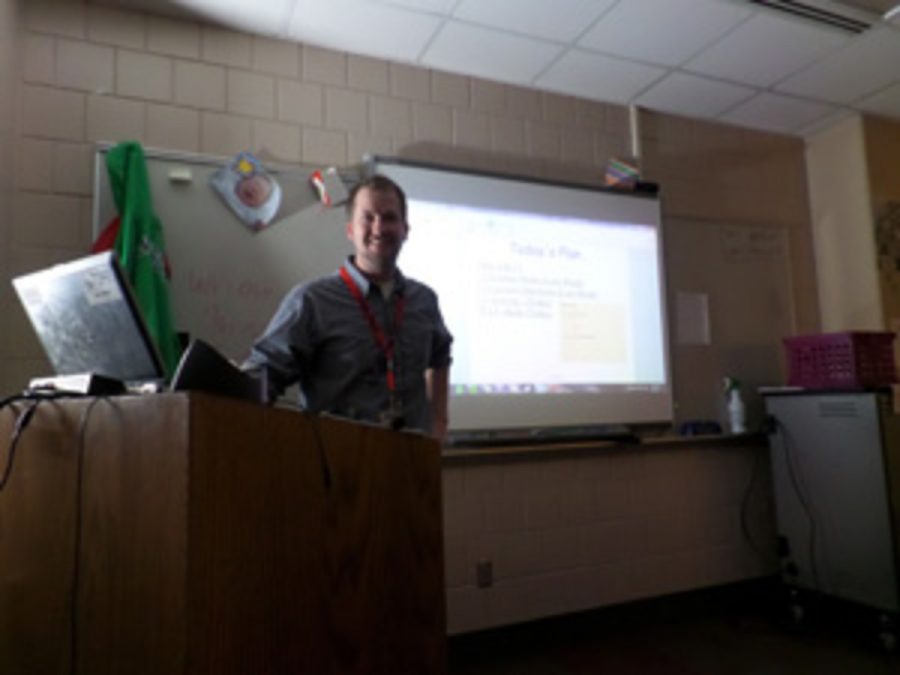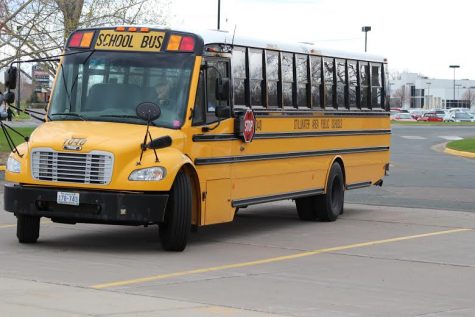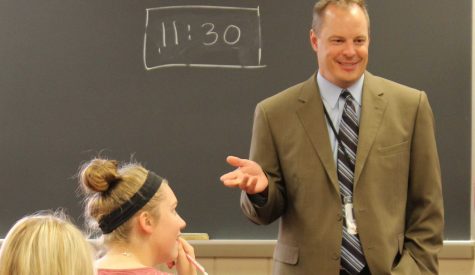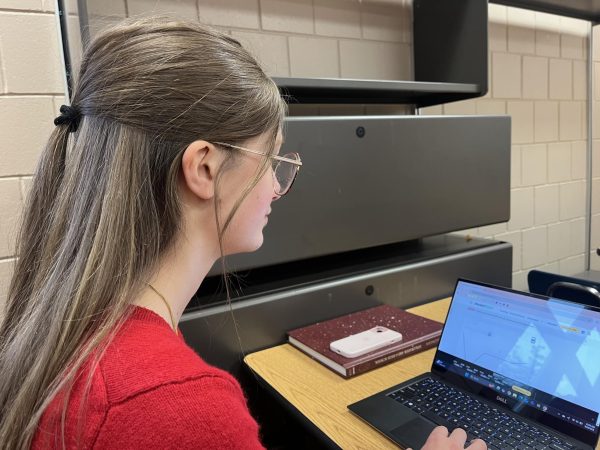Benson introduces flipped math class
Rob Benson doesn’t teach the class during class time but actually at home with videos and has the students work on homework in class. ” I think students are more engaged in the classroom now that I’m not the center of attention up there,” said Benson.
The flipped classroom is brand new to Stillwater Area High School. The basic idea is to try to help the students learn more individually, not forcing them to learn as a group. Instead of having whole-class lectures every day, students watch online videos to learn the material. The concept has been proven to work, and many sixth grade math classes in the district have been testing out the flipped classroom in recent years. This year, advanced algebra teacher Rob Benson has brought this concept to the high school.
“We get note sheets to do, then go home and watch the videos and fill out the sheets,” said junior Aaron Lick. “In class, we have time to work on assignments and ask questions.”
The note sheets are short cornell notes that the students must fill in. The videos, available on the teacher’s Moodle page, are around three minutes in length as a rule.
“I try to keep my videos short, about three minutes, maybe even less,” explained Benson. “On the screen, when I’m recording it, is the same exact sheet as they’ll have, it’s kind of an outline of what I’ll be teaching them that day, then I just go through part by part.”
Although his classes have only been flipped on a trial basis since the beginning of January, Benson already thinks he has been seeing some results. On Feb. 11, he had his first test under the new system.
“When I was looking at my results and comparing it to the average of all advanced algebra students, they’re doing pretty good; a couple percent higher than some of the others. That could be an anomaly… I don’t have anything definitively, but I think students are more engaged in the classroom now that I’m not the center of attention up there,” said Benson.
Some have said that the flipped classroom is a lazy way out of teaching and that students won’t be able to learn as well from videos as they do from a teacher. Indeed, many parents of Benson’s students expressed those very concerns when the idea of a flipped classroom was brought up to them. They thought that the flipped classroom just meant that the teacher wouldn’t be teaching their child at all any more.
“No, that’s not it,” explained Benson. “We’ll be teaching your [child], in fact there will be more one on one time with [them]. I’ll be giving them a lecture, they can watch it, and when they’re confused, they can ask me a question.”
With only a couple of units under his class’s collective belt, it’s tough to know if Benson’s ideas are truly proving effective. But it’s obvious that the early results show students are learning better and they like the flipped classroom as a whole. Now, Stillwater students just need to wait and see how far the flipped classroom model is going to expand.

Adam Johnson spends his time playing football and throwing for track. He is involved in Young Democrats of Stillwater and Amnesty, and the school's trap...












Alex Eder • Apr 2, 2014 at 11:03 am
I liked This article, it did a good job of informing the reader about the flipped classroom. The reader also gives you a summary of how the class is going, and it does a very nice job of telling all sides of the story. You hear from the student, the teacher and you even hear the concerns of the parents. Good Job!
Karlee Stennes • Apr 1, 2014 at 10:16 pm
The topic was interesting cause I have never seen a teacher do this, the heading was intriguing. It had good quotes from both Mr. Benson and his students in class.
Colin Peters • Mar 31, 2014 at 10:38 pm
A concept that I’ve always been interested in, I was excited when I saw this headline. Great job explaining the routine of the flipped class. I wonder how this would work for other classes!
Nicole Loe • Mar 31, 2014 at 3:12 pm
I liked how you incorporated the students feelings toward the flipped classroom as well as the parents view towards it as well. Very nice article.
Ellie • Mar 30, 2014 at 12:02 pm
Thie is very well written and I liked how you showed two different perspective on it by telling why some parents had concerns about the new style of teaching. You explained the process extremely well.
Olivia Braun • Mar 27, 2014 at 8:03 am
This article really shows how benson uses the flipped classroom technique. It’s intriguing. The use of words and placement of quotes is good and the flow of the article runs nicely together.